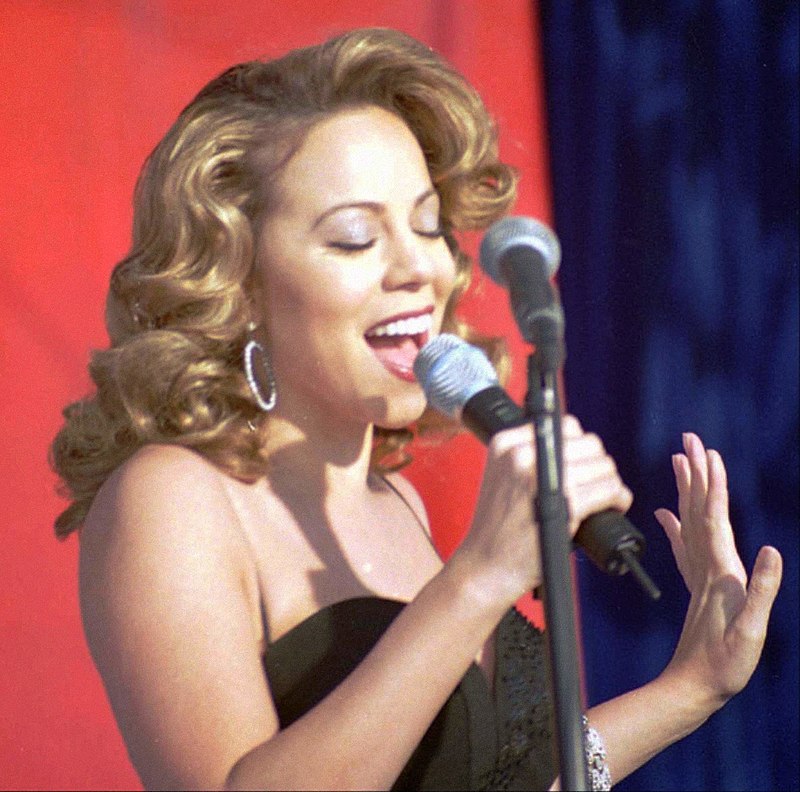Pictured: Mariah Carey, circa December 1998
On October 28, 1994, Mariah Carey released what would become the most successful Christmas album of all time. While it featured classic holiday staples like “Santa Claus Is Comin’ to Town” and “Silent Night,” it could only be the unforgettable “All I Want for Christmas Is You” that earned the title of the most listened-to Christmas song of all time. Since then, this song has devolved into the ultimate holiday nightmare for retail workers everywhere.
In the thirty years since its release, many have tried and failed to create their own original holiday classics in an attempt to capture the hearts of listeners—and it does truly seem like an impossible task. The genre itself still holds strong, but nobody has since created a tune capable of leaving a lasting impact on Christmas culture for years to come. Typically, when an artist releases a holiday album, they rely on covers of traditional Christmas songs. Occasionally, they’ll add their own spin to make it feel somewhat fresh, but ultimately, during the season, you find yourself hearing the same songs over and over again. The fact that people can settle for that fascinates me.
To understand this, let’s break down the concept of Christmas. If you’ve noticed, most Christmas classics are old—like, really old. Typically, the music you would expect to hear from a church choir weighs in at a few centuries old. The most timeless hymns originate from Christian liturgical traditions, which most people associate with the season of Christmas. These classics include “O Come, O Come, Emmanuel”, “The First Noel”, and “Silent Night”, all of which were released several centuries apart. So if you complain about Christmas songs lacking originality today, just imagine what people endured in the 16th century.
By the time the twentieth century arrived, things started changing fast. At this point, Christmas has become strongly associated with comfort, togetherness, and being home with family. This longing heightened during World War II, and you better believe the music industry responded. The most prominent song to emerge from this period was “White Christmas” by Bing Crosby. For many, this genre evokes strong feelings of nostalgia and comfort, a sentiment that was amplified with the invention of the radio. During time of crisis, many songs focused on the theme of longing for loved ones, resonating deeply with listeners.
This period also marks the time when Christmas became a lot more commercialized. As consumers began to approach this mass-marketed holiday as a fête of hyper-consumerism, Christmas music started going in a different direction. The 50s and 60s gave us timeless classics, like “Rockin’ Around the Christmas Tree”, “Jingle Bell Rock”, and “Rudolph the Red Nose Reindeer”. Whether or not you cared for these tunes, it’s hard to ignore how much we’ve strayed from the original, more spiritual meaning of Christmas. I feel that A Charlie Brown Christmas marked a direct response to this shift in attitude towards the holiday, as many were longing to return to the more nostalgic, old-fashioned feel of Christmas.
By the late twentieth century, Christmas classics began to become less frequent. In the 70s, we saw two hits by John Lennon and Paul McCartney, with “Happy Xmas (War is Over)” and “Wonderful Christmastime” respectively. Lennon’s song was in direct response to the Vietnam War, echoing the way Christmas culture was shaped during World War II. However, McCartney’s single aligned more with the consumer-driven side of Christmas. This era marked a shift towards upbeat catchy holiday hits that wer perfect for playing in retail stores. In the 80s and 90s, our ears were blessed with hits like “Last Christmas” by WHAM! and, of course, “All I Want for Christmas is You” by Mariah Carrey.
Since then, we’ve suffered a drought of truly original Christmas music. While some artists have attempted to create new holiday hits, most have fallen short, as I can’t even name a single one that has stood the test of time. The Christmas covers, however, never stopped coming. While they play a key role in keeping the holiday music tradition alive, it seems like few have an interest in hearing anything new. For most people, the holiday revolves around nostalgia and tradition – and so why would they want to embrace new music. I believe Christmas music from each decade reflects the culture of its time, so what does that say about today?
Are we starting to see a downall in the holiday’s significance? Honestly, I don’t think so. I believe the appeal of festive culture comes from our need for familiarity in a world that feels increasingly chaotic—and we certainly live in a chaotic era. I don’t necessarily think that’s a bad thing, but I do often find myself yearning for something new. So how do we bring back an era originality and fresh themes in Christmas music? It’s simple, you start a war!


Leave a Reply